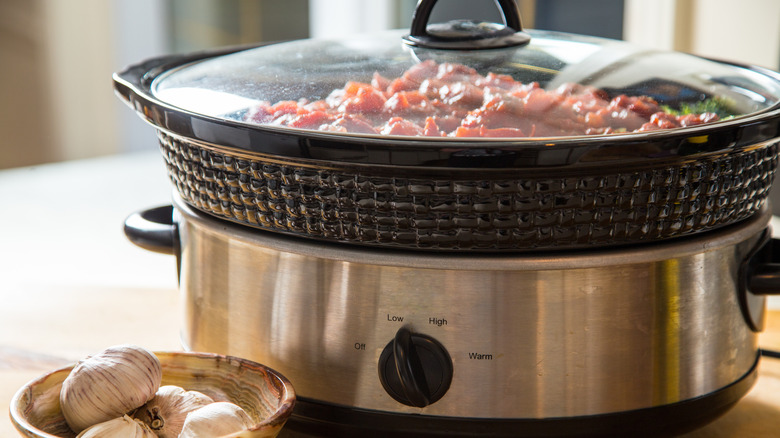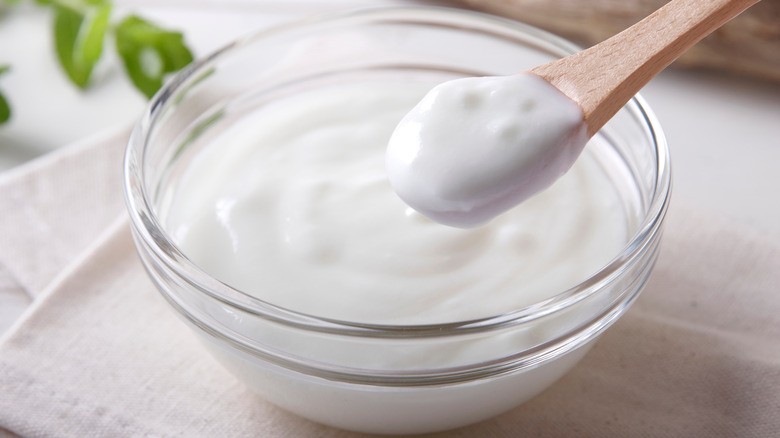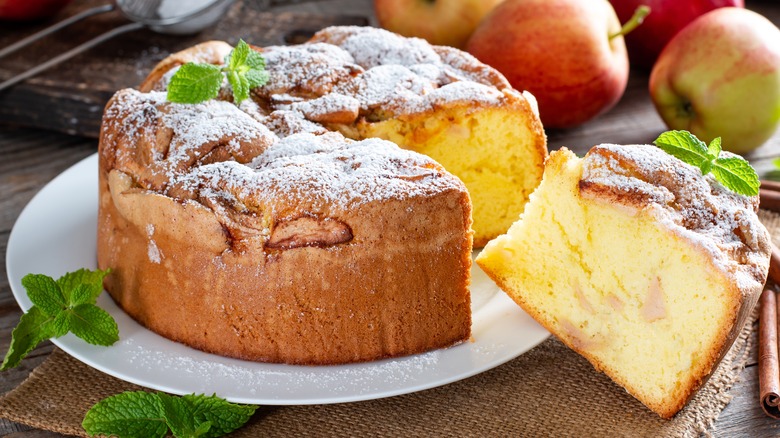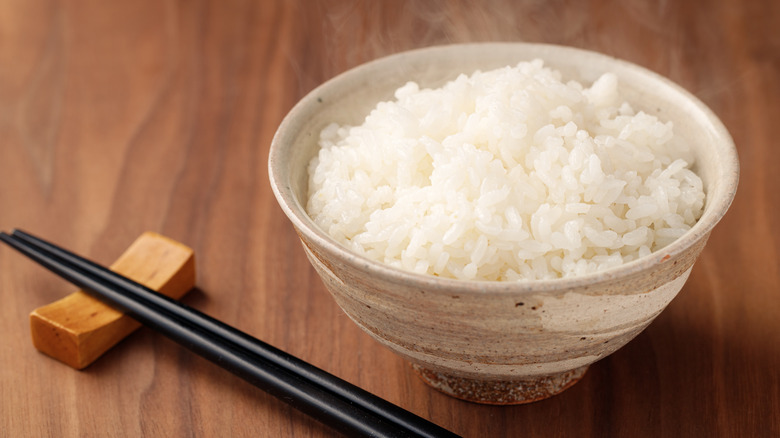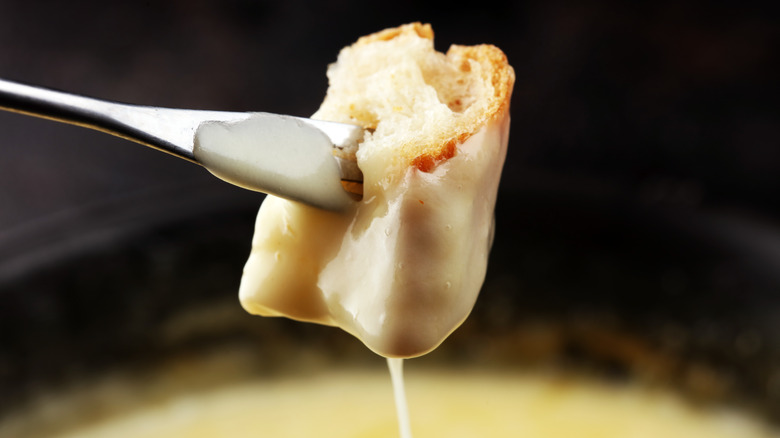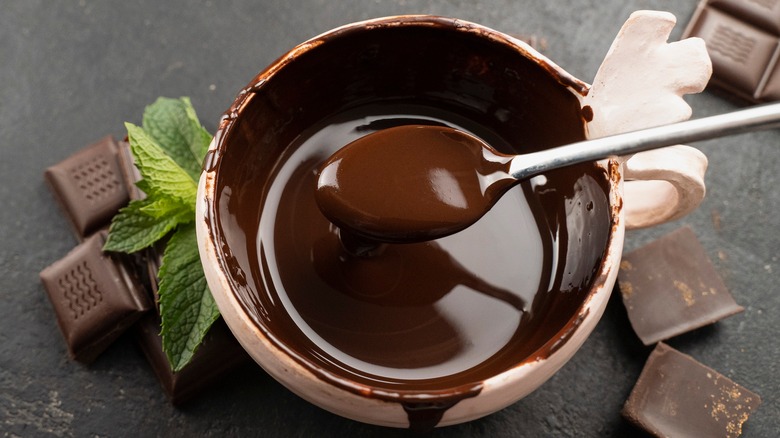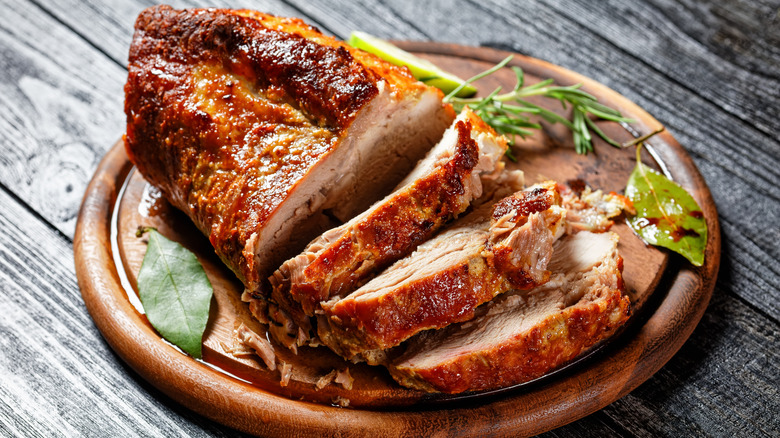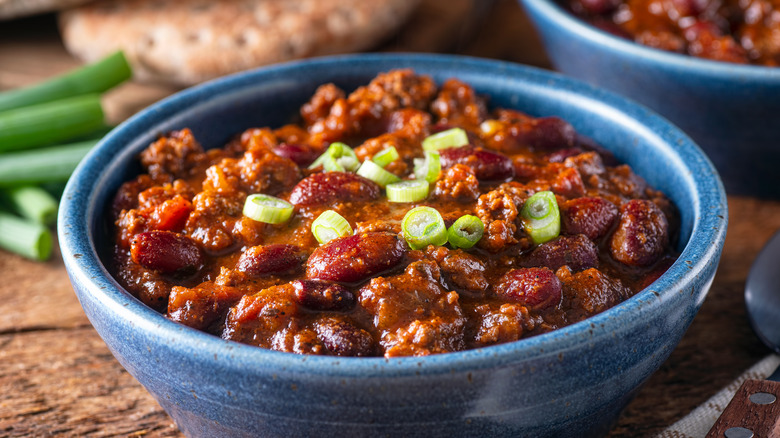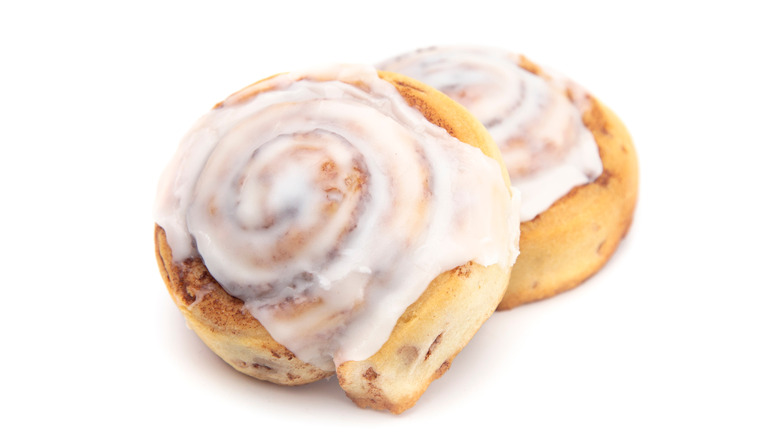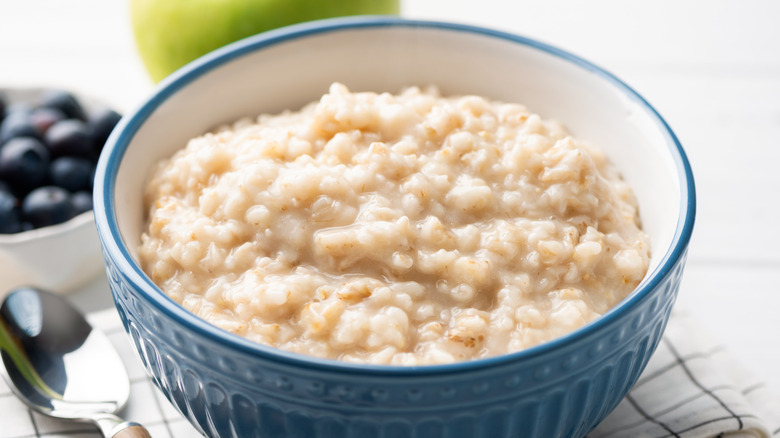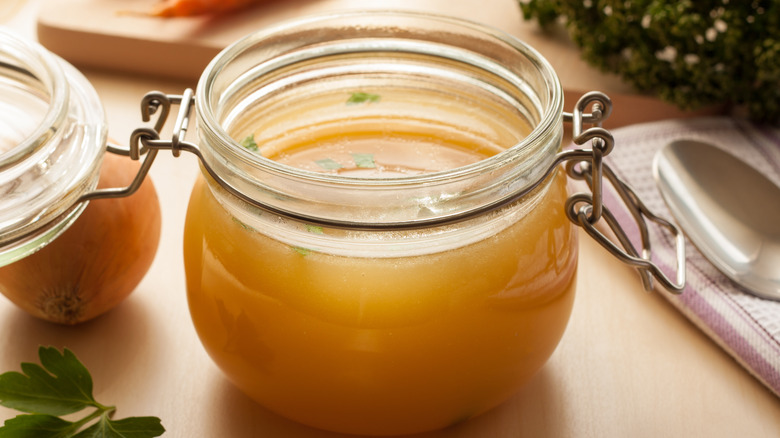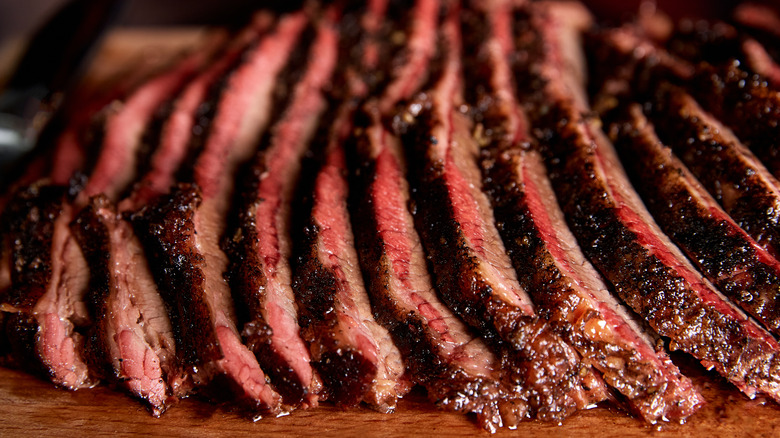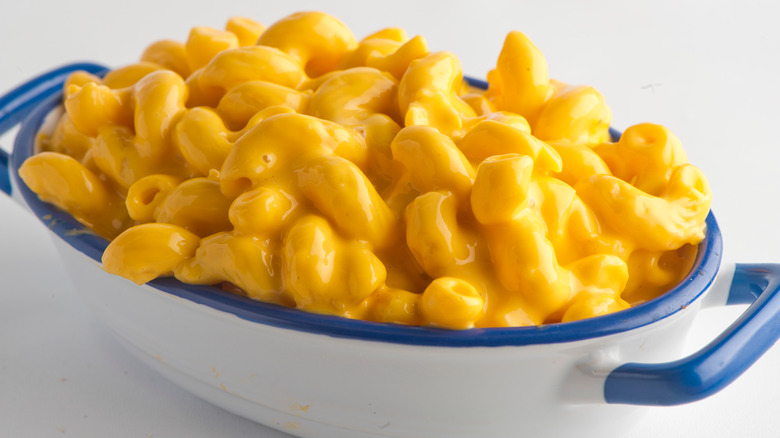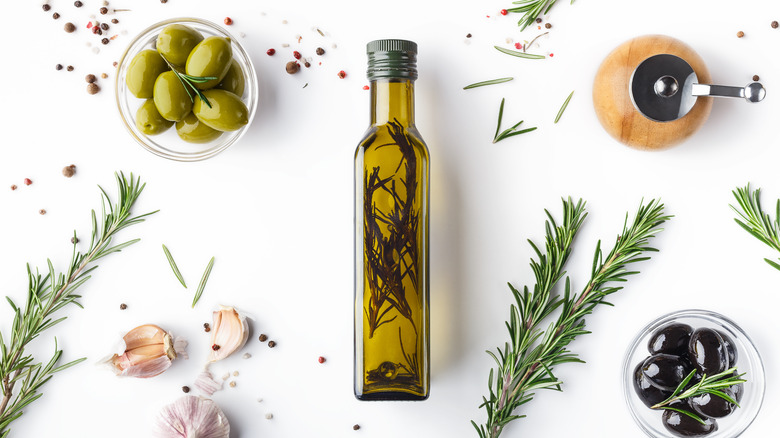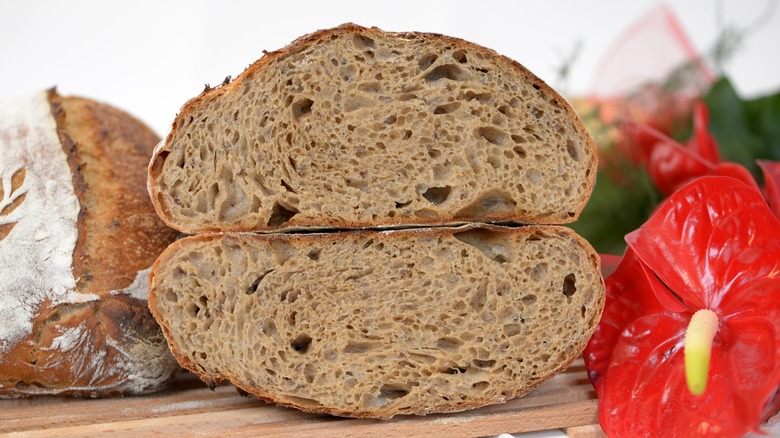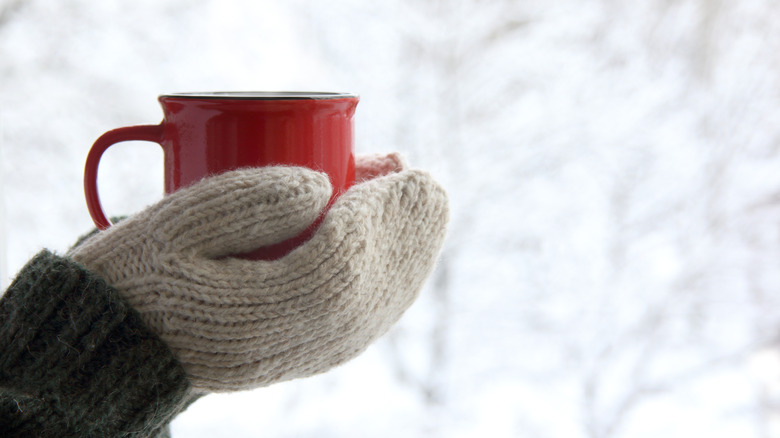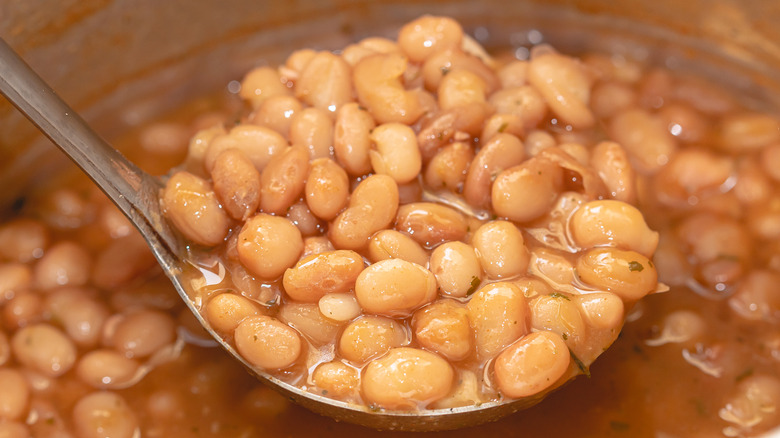The Absolute Best Uses For Your Slow Cooker
The humble slow cooker isn't the most glamorous cooking gadget available to a modern cook. In an age when new-fangled innovations like Instant Pots, air fryers, and sous-vide machines rule the food media landscape, a simple device that just cooks food slowly, for a long time, almost seems quaint.
The modern slow cooker was patented in 1940. Its inventor envisioned it as the perfect tool for cooking cholent, a traditional Jewish Sabbath meal of meat, beans, and vegetables stewed together. The Naxon Beanery, as it was called, was slow to catch on, but that all changed when it was rebranded as the Crock Pot in 1971 (via Smithsonian Magazine). It almost immediately gained favor with American home cooks, and ever since then, clever slow cooker enthusiasts have been dreaming up ingenious uses for their favorite appliance.
The slow cooker ideas in this list are a combination of obvious, tried-and-true uses and some surprising tricks. Prepare to be shocked at how many different types of food you can make in a slow cooker. If you don't have a slow cooker now, this list just might make you rush to the store to pick one up.
Homemade yogurt
If you've never had homemade yogurt before, we encourage you to give it a try. Not only is the end result delicious and creamy, but it's also incredibly rewarding to make something you normally just pick up from the store.
You probably already know that you can make yogurt in an Instant Pot. That appliance even has a special yogurt button, and it automates the process to make it easy. What you might not have known is that it's also super simple to make yogurt in a slow cooker.
According to HGTV, all you need to do to make slow cooker yogurt is heat milk on high for a couple of hours and then mix it with a small amount of store-bought yogurt that contains live bacteria. Then, you simply seal up the slow cooker, stash it somewhere warm for around eight hours, and return to find creamy, fresh yogurt. The slow cooker is great for this process because its gentle heat won't burn the milk as it comes up to temperature. This is a good project to start in the evening so you can wake up to yogurt in the morning.
Cake
Slow cookers are known for being great at cooking savory foods, especially moisture-rich recipes like braised meats. You might be surprised to find out that slow cookers can also be used for baking.
It seems counterintuitive, but the low, even heat of a slow cooker bakes a great cake. This banana pudding cake recipe couldn't be simpler, as it uses boxed cake mix and instant pudding to make the batter. It does take a long time to bake — around three hours — but you don't have to babysit it during that time. This cake is a set-it-and-forget-it recipe. To make sure the cake doesn't stick to the slow cooker's inner pot, it's a good idea to line it with parchment paper before pouring in the batter.
Slow cookers are great for making cheesecake as well. Cheesecake is temperamental and can easily crack or burn in the oven. Slow cookers are so gentle that they help ensure a creamy, evenly cooked result.
Rice
Rice is a simple side dish, but it's pretty difficult to cook correctly on the stovetop. Rice burns easily, and it's tough to get the heat and moisture levels just right so you end up with a fluffy, perfectly-cooked outcome. A rice cooker will solve all of these issues, but if you don't eat rice every day, it might be hard to justify buying a bulky unitasker.
This is where a slow cooker is your best friend. As A Clean Bake points out, you won't have the same problems with burning in a slow cooker as you would on a stove. The rice is also going to cook more evenly, especially if you remember to give it a stir halfway through the cooking time. Even better, you don't have to think about the rice while it's cooking, so you can focus on preparing whatever flavorful dish you're going to serve with it. The one downside is that slow cooker rice requires you to think ahead, as it takes around 2.5 hours to be ready to serve.
Fondue
Making fondue at home conjures images of the little chintzy fondue sets that litter the shelves of thrift stores across America. If you want to have a taste of midcentury cheese-dipping fun without committing to a fondue pot, the slow cooker is your answer. One recipe from The Spruce Eats has you prepare the fondue in a regular pot on the stove and then transfer it to a slow cooker to keep it warm and melty. Ree Drummond's recipe is even simpler, as you do everything in the slow cooker (via Food Network).
You don't have to limit yourself to fondue, either. Any dip that benefits from being kept warm is a great fit for the slow cooker. All of our recipes for queso would hold well in a slow cooker. You could modify this Buffalo spinach and artichoke dip recipe to work for a slow cooker as well. With your slow cooker, you never have to deal with congealed, cold cheese-based dips again.
Melting chocolate
Melting chocolate can be a finicky process. As Leaf explains, chocolate really doesn't like being exposed to high heat. If you accidentally overheat chocolate, it can become gritty or even burn. For smooth chocolate, low, controlled heat is best. Luckily for you, you have a slow cooker.
You want to set your slow cooker to the coolest temperature possible. If it has a "warm" setting that's even lower than "low," that will be the safest. Then, you simply pour in pieces of chocolate and cook them with the lid on until they melt.
If you want even more insurance against scorching, Tbsp. recommends filling jars with chocolate and putting them in a water bath in your slow cooker. If your slow cooker doesn't have a warming function, this might be the way to go. This method has the added benefit of allowing you to melt multiple types of chocolate at once, which could be useful if you're using it to create decorative designs.
Roasted meats
Slow cookers have some major advantages over ovens for roasting a perfect, juicy, piece of meat. Since slow cookers heat food at a low temperature for a long time, you have more margin for error than you do in a hot oven. Especially with lean meats, just a few minutes can be the difference between perfectly done and tragically dry if you roast them in the oven the conventional way. You also get added moisture in a slow cooker because it's a wet environment.
These benefits are all apparent in this recipe for slow cooker pork loin roast. The pork is cooked gently over the course of around five hours, creating succulent, tender meat. Additionally, fragrant sautéed aromatics and a small amount of flavorful cooking liquid contribute both flavor and moisture to the final product. Don't think you have to stick to pork loin with this method; you could adapt the same basic steps for many different roasts, though you may have to tweak the cooking time.
Soups and stews
This is a classic way to use a slow cooker, and for good reason — it works great. Nothing beats the feeling you get when you start a delicious stew in the morning, go to work, and return to a ready-to-eat meal. It's the ultimate weekday dinner hack.
A slow cooker easily surpasses the stove as the perfect soup-making tool. For one, you don't have to pay attention to the food in a slow cooker. Additionally, you know that the temperature won't get too high, and, as long as you use sufficient liquid, nothing is going to burn.
Basically any kind of soup or stew can be made in a slow cooker-friendly way, but if you need some ideas to get you started, we've got you covered. This white chicken chile recipe is a dependable, sturdy classic that's sure to be a crowd-pleaser. If you're looking for something a little bit more special, try our recipe for khoresh-e holu, a sweet-and-sour Persian chicken stew with peaches.
Breakfast pastries
Does anybody really want to put a lot of work into cooking breakfast in the morning? The last thing we want to do when we wake up bleary-eyed and cranky is to labor over a hot stove. Fortunately, there are some slow cooker recipes for sweet breakfast treats that don't require much more from your sleep-deprived self than turning on the slow cooker. The only downside is that they do take some time to cook, so they might not be ideal if you're the sort of person who's hungry the moment you wake up.
This slow cooker French toast recipe combines brioche bread with a flavorful custard. You can mix all the ingredients together in the slow cooker insert the night before, refrigerate, and simply pop the insert in and turn on the cooker when you wake up. Another classic breakfast food that works great in the slow cooker is cinnamon rolls. While our method for slow cooker cinnamon rolls is semi-homemade, if that seems like too much work, we won't judge if you just throw canned cinnamon roll dough in your slow cooker and call it a day.
Oatmeal or porridge
Oatmeal is another great candidate for a slow cooker breakfast. Instant oatmeal is kind of gross, but real old-fashioned oatmeal feels like an ambitious cooking project at 6 a.m. With a slow cooker, you can actually start it the night before and wake up to cooked oatmeal, which is great for early risers who need food first thing in the morning (although it does get weird if it sits in the cooker for too long, so it's best to set a timer just in case). This recipe for slow cooker oatmeal is flavored with apples, maple syrup, and warm spices, but the specific mix-ins are up to you.
If you prefer your breakfast porridge more savory, then congee is the way to go. Congee is a kind of rice porridge that can be flavored with many different toppings. This recipe from The Kitchn starts with a simple base of rice, chicken, and ginger, and then incorporates fun add-ons like roasted peanuts, soy sauce, and herbs to add flavor and texture at the end.
Stock and broth
Homemade stock is delicious, cheap, and useful for a wide variety of recipes. Unfortunately, when you make it on a stove the conventional way, it is also time-consuming and finicky. Traditional chicken stock recipes require you to maintain a simmer for a long time, which can be a pain, especially if your stove has unreliable heat regulation.
With a slow cooker, you simply throw meat bones and aromatic vegetables into the insert, cover them with water, and then let them infuse for however long you want. Since you don't have to supervise the proceedings, you can let the ingredients steep for a really long time, producing stock with a rich, complex flavor.
You can use this slow cooker chicken stock recipe as a starting point, but there's no reason you have to stick with the same aromatics. For example, if you want an Asian flavor profile, swap out the vegetables and rosemary in the recipe for ginger, scallion, and garlic. You can also use the same basic method to make pork, beef, or even vegetable stock.
Barbecued meats
True barbecue requires smoking meats for a long time over an open fire, but not everyone has the time and inclination to spend 12 hours worrying over a brisket. Not to mention that many people don't even have access to outdoor cooking facilities. If you want tasty barbecue without going to the trouble of setting up a smoker, a slow cooker will make very tasty meat. It will cook your protein at a low enough temperature to tenderize it, and you can add plenty of flavor with sauces and seasonings to make up for the missing smoke.
In fact, you can even add your own fire pit flavor with liquid smoke, as we do in our slow cooker barbecue brisket recipe. Some people might not even be able to tell that this brisket didn't actually cook over a mesquite fire. If poultry is more your thing, this barbecue chicken recipe uses smoked paprika to lend it some smoky flavor.
Mac and cheese
Mac and cheese is a comfort classic, but there's a reason that many people make it with a boxed mix instead of from scratch. It's simply a hassle to prepare it using the traditional method. You have to boil pasta, make cheese sauce, mix them together, and then bake the whole thing in the oven. It's enough to leave your whole kitchen covered in dishes. Thankfully, there is another way.
This genius slow cooker mac and cheese recipe takes away all the headaches of the traditional method. You don't even have to cook the macaroni in a pot — you just dump the raw noodles into seasoned milk and let the slow cooker do the rest. Then at the end, once the noodles are cooked, you melt the cheese in.
We bet you could use this hack to make other types of creamy noodle dishes as well. If you threw in some garlic and chicken and swapped in parmesan for the cheddar, that would make for a super easy Alfredo riff.
Infused oils
Making infused oils isn't terribly difficult on the stove, but a slow cooker can give you an intense infusion with very little effort on your part. This tutorial from The Crunchy Ginger shows one method for doing it. The author uses this method for making oils for skincare, but you can follow the exact same process for making culinary oils. All you need are some heat-safe jars, some oil, and whatever herbs or other tasty stuff you want to infuse.
Simply pack your jars with a healthy amount of the flavorings, pour oil over them, and then cook in a water bath in your slow cooker for up to a full day. Then, strain the solids out using a coffee filter or cheesecloth and save the flavored oil in a clean container.
You can use this method to infuse herbs like thyme, rosemary, and basil into oil. Herb oil is a great ingredient in salad dressings and is delicious as a dip for warm bread. This would also be a great way to make homemade chili oil.
Bread
Baking bread in a slow cooker works surprisingly well. It saves a fair bit of labor compared to standard bread recipes, as you're not required to knead the dough very much and the dough rises a fair bit during the cooking process, eliminating the need for a second rise.
This recipe from Allrecipes produces a good-looking sesame-crusted loaf. Just like when you bake a slow cooker cake, it's best to line the cooker's insert with parchment so the bread doesn't stick to the sides as it cooks.
Another recipe from Delish is one of the easiest yeast-risen bread recipes we've ever seen. You don't need to let the dough rise at all before cooking, as it all happens while the bread is in the slow cooker. The idea of just mixing together bread ingredients and then letting an appliance do the rest of the work is incredibly appealing. Since slow cookers don't get very hot, the bread will be pale and soft even when it's cooked through. This recipe solves the problem by throwing the cooked loaf under the broiler after it's baked.
Hot beverages for a crowd
If you have parties in the winter, you're probably going to want to serve hot beverages. Of course, hot drinks can quickly start to cool down and turn into room temperature drinks (which nobody wants). If you want to keep a large quantity of a hot beverage warm for an extended period of time, reach for your slow cooker. That way, your hot cocoa will be as hot at the end of the party as it was when you first made it.
For even more convenience, you can make some drinks directly in your slow cooker. This AllRecipes method for rich, decadent hot chocolate involves melting chocolate chips in milk in a slow cooker. It's super easy. If you want a warming adult beverage, slow cookers are perfect for making mulled wine, like in this recipe from The Kitchn. The combination of red wine, maple syrup, brandy, and spices will make all of your guests feel the holiday cheer.
Beans
We all know that cooking dried beans tastes better than just opening a can, right? Dried beans have better texture and flavor than the mushy ones that come from a tin. However, cooking beans is undeniably annoying. It takes forever, and you have to monitor your stove's heat level and make sure there's enough liquid so the bottom doesn't scorch and the beans on top don't dry out.
Making beans in a slow cooker frees you up to do whatever you want while the beans cook unsupervised. You can use the slow cooker to make just about any bean dish you would normally make on the stove, from refried beans to pinto beans to New Orleans-style red beans and rice with Andouille sausage. The best part is, none of those recipes require you to soak the beans in cold water for a day before cooking them. We're never able to remember that we want beans a full day in advance of when we're actually going to eat them, so the omission of the soaking step is much appreciated.
